Christophe Gueret
Explaining Groups of Instances Counterfactually for XAI: A Use Case, Algorithm and User Study for Group-Counterfactuals
Mar 16, 2023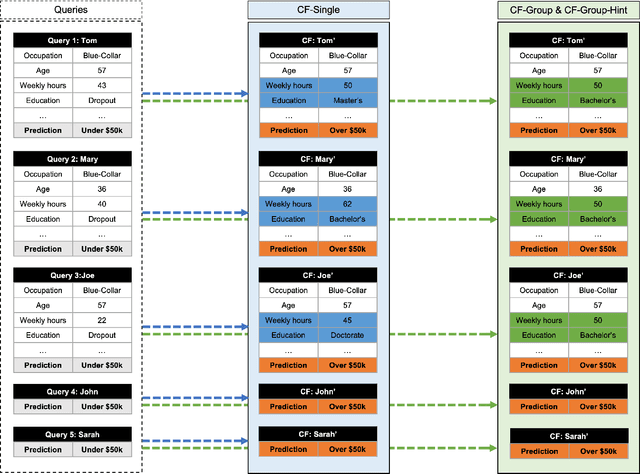


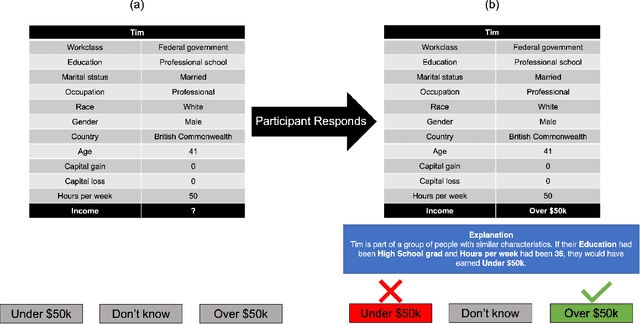
Abstract:Counterfactual explanations are an increasingly popular form of post hoc explanation due to their (i) applicability across problem domains, (ii) proposed legal compliance (e.g., with GDPR), and (iii) reliance on the contrastive nature of human explanation. Although counterfactual explanations are normally used to explain individual predictive-instances, we explore a novel use case in which groups of similar instances are explained in a collective fashion using ``group counterfactuals'' (e.g., to highlight a repeating pattern of illness in a group of patients). These group counterfactuals meet a human preference for coherent, broad explanations covering multiple events/instances. A novel, group-counterfactual algorithm is proposed to generate high-coverage explanations that are faithful to the to-be-explained model. This explanation strategy is also evaluated in a large, controlled user study (N=207), using objective (i.e., accuracy) and subjective (i.e., confidence, explanation satisfaction, and trust) psychological measures. The results show that group counterfactuals elicit modest but definite improvements in people's understanding of an AI system. The implications of these findings for counterfactual methods and for XAI are discussed.
Background Knowledge Injection for Interpretable Sequence Classification
Jun 25, 2020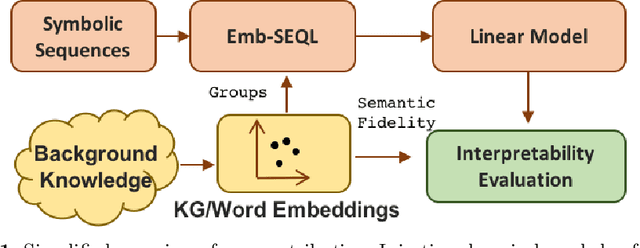

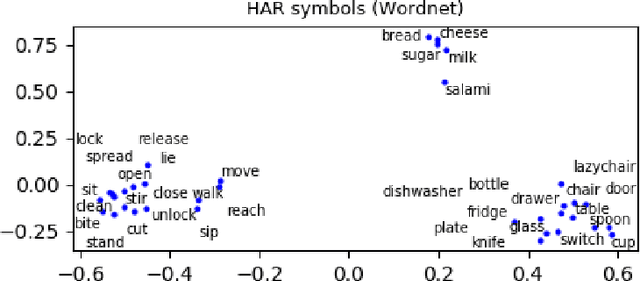
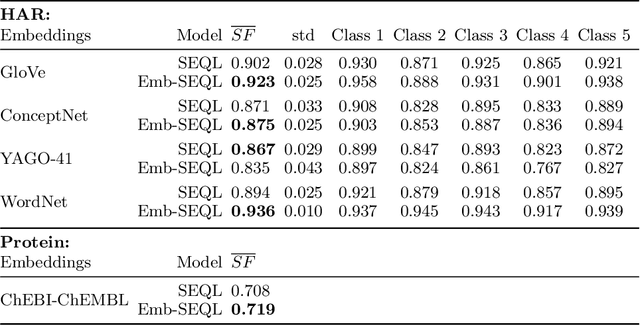
Abstract:Sequence classification is the supervised learning task of building models that predict class labels of unseen sequences of symbols. Although accuracy is paramount, in certain scenarios interpretability is a must. Unfortunately, such trade-off is often hard to achieve since we lack human-independent interpretability metrics. We introduce a novel sequence learning algorithm, that combines (i) linear classifiers - which are known to strike a good balance between predictive power and interpretability, and (ii) background knowledge embeddings. We extend the classic subsequence feature space with groups of symbols which are generated by background knowledge injected via word or graph embeddings, and use this new feature space to learn a linear classifier. We also present a new measure to evaluate the interpretability of a set of symbolic features based on the symbol embeddings. Experiments on human activity recognition from wearables and amino acid sequence classification show that our classification approach preserves predictive power, while delivering more interpretable models.
 Add to Chrome
Add to Chrome Add to Firefox
Add to Firefox Add to Edge
Add to Edge